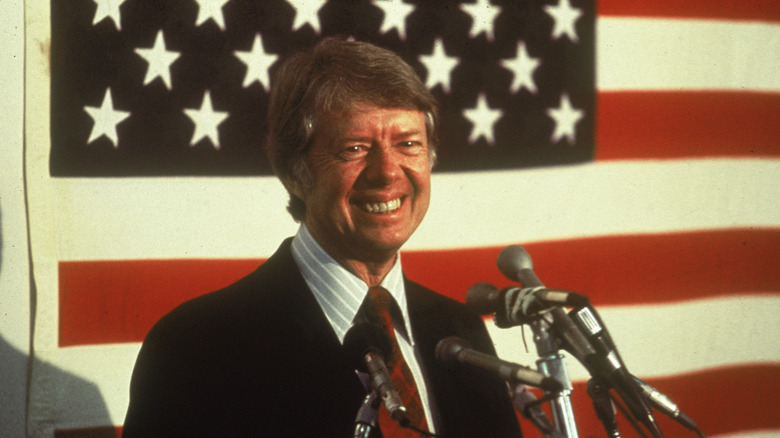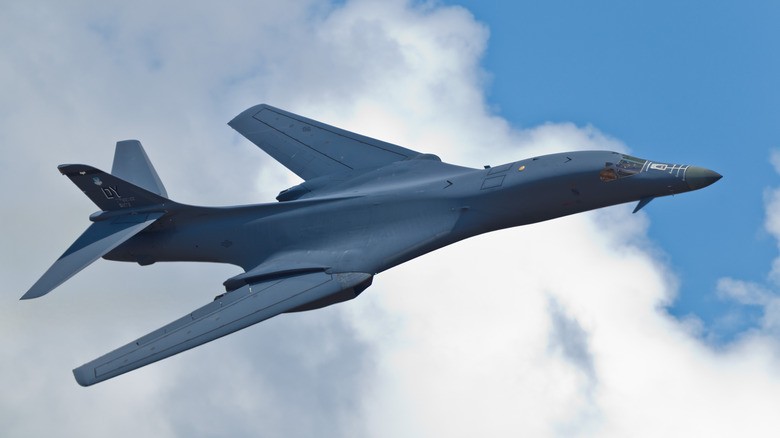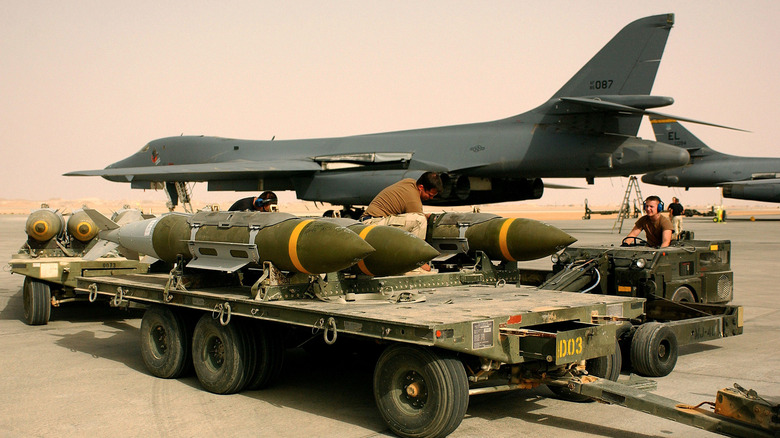The Supersonic Cold War Bomber That President Jimmy Carter Never Liked
The Cold War between the United States and the Soviet Union served as a sort of contest. Which could develop and produce a long-range strategic bomber and make enough of them to keep the other country on its toes?
This led to the development of bombers like the B-47, a record-breaking bomber that was the first of its kind. The B-47 led to the B-52, an incredibly long-range bomber still serving within the United States Air Force decades after its introduction. The Soviet Union developed the turboprop-powered Tupolev Tu-95 bomber, which still sees service in the Russian Federation's air force, and the Tupolev Tu-160 supersonic bomber. Now, the United States utilizes the sneaky B-2 Spirit stealth bomber and a variety of yet-to-be-fully-declassified long-range bombing solutions should a global conflict break out.
In the 1970s, the United States sought to develop a new supersonic bomber from scratch to replace the B-52. The XB-70, a previously attempted rework, was off the table since the Kennedy Administration had canceled it years earlier. Eventually, two new candidates emerged. President Jimmy Carter took one look at one of the potential replacements and shut it down on June 30th, 1977 (though it would later be resurrected). That bomber was the Rockwell B-1 Lancer, "The Bone."
The Lancer gets its wings clipped
Take one look at the B-1, and it's no wonder Jimmy Carter wanted nothing to do with it. It's enormous, with a length of 146 feet and a wingspan of 137 feet when fully expanded. It was intimidating, with a long nose and otherworldly appearance, and capable of carrying nuclear ordinance. And last but not least, it was costly, with a staggering unit cost of $317 million. The plane didn't mix well with President Carter's famous humanitarian spirit stemming from his deeply-held religious beliefs.
The program sat dormant until the Reagan presidency brought it back from the dead and kicked it into high gear in 1981. By 1984, engineers had the plane flying. In 1988, 100 B-1s were made, and the United States developed and pushed into service its first-ever long-range strategic supersonic stealth bomber. Until the B-2 Spirit showed up on the scene in the 1990s, the B-1 was the most advanced piece of war machinery the world had ever seen.
Stealthy, heavy, and very fast
Specification-wise, the Rockwell (now Boeing) B-1 Lancer is nothing short of terrifying for any enemy targets on the receiving end and awe-inspiring for soldiers receiving its assistance. It has a payload of 75,000 pounds of ordnance, 5,000 pounds more than the comparatively ancient B-52s. The Lancer is capable of delivering up to 84 500-pound Mk-82 bombs on a target and is capable of shooting air-to-ground missiles, laying naval mines, and whatever else it can fit in its bomb bay. Initially, the plane could carry cruise missiles with a nuclear payload, but the capability was removed in 2011 after a four-year process.
As with most military hardware of the stealth variety, exact performance specifications are classified. Still, it has a top speed of 900-plus miles per hour and has a range listed as "intercontinental," according to the United States Air Force. Simply put, the Lancer can get anywhere in the world very quickly.
In 2023, the B-1 is the primary bomber of the United States Air Force, with 62 aircraft in active service.


